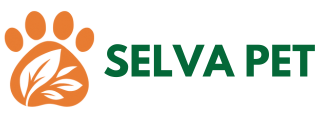When dealing with a senior dog with incontinence: what to do? It’s a tough situation that many pet owners face. Understanding the signs and causes helps you provide the right care. This article will cover everything you need to know to keep your furry friend comfortable and happy. From practical solutions to hygiene tips, you’ll find all the support you need for your aging pup.
Understanding Senior Dog Incontinence: What to Look For
When it comes to our furry friends, nothing is more heart-wrenching than watching them age. One of the challenges many pet owners face is incontinence in senior dogs. Understanding this condition is crucial for both you and your beloved pet.
So, what does incontinence look like? It’s not just about puddles on the floor. You may notice your dog leaking urine while sleeping or when excited. Sometimes, they might even struggle to hold it in when they need to go out. Keep an eye out for these signs; they can be subtle.
As a pet parent, I know how distressing it can be to see your dog struggling. But remember, this isn’t a reflection of your dog’s love for you. It’s simply a part of growing older. Recognizing these signs early on can help you address the issue more effectively.
Common Causes of Incontinence in Senior Dogs
Now, let’s dive into the common causes of incontinence in our senior pups. There are several factors at play here. First, hormonal changes can significantly impact bladder control. Just like humans, as dogs age, their bodies undergo changes that can affect their urinary tract.
Another common cause is urinary tract infections (UTIs). These infections can irritate the bladder, leading to frequent urination or leaking. If you notice your dog straining to urinate or showing signs of discomfort, a UTI might be the culprit.
Furthermore, certain medical conditions, such as diabetes or kidney disease, can also contribute to incontinence. These health issues can increase the production of urine, making it harder for your pooch to control their bladder.
Lastly, neurological issues, like spinal cord injuries or diseases, can affect a dog’s ability to control their bladder. If your dog has had any recent accidents, it’s essential to consider these possibilities.
Senior Dog with Incontinence: What to Do? Tips for Immediate Relief
If you find yourself in the situation of caring for a senior dog with incontinence, don’t panic! There are several immediate steps you can take. First, try to establish a consistent bathroom schedule. Take your dog out at regular intervals, especially after meals and naps. This can help them relieve themselves before they have an accident.
Next, consider using puppy pads or absorbent bedding. These can provide a quick solution while you work on addressing the underlying issue. It can also help keep your home clean and reduce stress for both you and your furry friend.
Another tip is to limit your dog’s access to water during the evening. While it’s essential to keep them hydrated, cutting back on water intake before bedtime can help minimize accidents during the night.
Lastly, don’t forget about comfort. Make sure your dog has a warm, dry place to rest. If they’re feeling secure and cozy, they may be less anxious about their incontinence.
Managing Incontinence in Dogs: Practical Solutions
Managing incontinence in dogs requires a multi-faceted approach. One of the most effective ways to support your senior dog is through diet. A high-quality diet can improve overall health and bladder function. Consider consulting with your veterinarian about the best food options for your dog’s specific needs.
In addition to diet, regular exercise is crucial. Keeping your dog active can help maintain muscle tone, including the muscles that control the bladder. Simple walks or gentle playtime can make a world of difference.
Moreover, consider using dog diapers. They might sound a bit unconventional, but many pet owners find them to be lifesavers. They can help manage accidents and keep your home clean while providing your dog with the comfort they need.
Lastly, don’t underestimate the power of supplements. There are many products on the market designed to support urinary health in dogs. Talk to your vet about options that might be suitable for your senior dog.
Dog Bladder Control: How to Support Your Senior Pet
Supporting your senior pet’s bladder control is essential for their quality of life. One way to do this is through training. Yes, even older dogs can learn! Reinforcing positive behavior when they go outside can help them associate the act of relieving themselves with praise and rewards.
Another strategy is to create a designated bathroom area in your yard. This can help your dog understand where they are supposed to go, making it easier for them to relieve themselves when needed.
Additionally, consider incorporating bladder-strengthening exercises into your dog’s routine. Just like humans, dogs can benefit from exercises that target their pelvic floor muscles. Simple activities, like walking on uneven surfaces or climbing stairs, can help strengthen these muscles.
Lastly, make sure your dog has easy access to their bathroom area. If your dog struggles to get up and down stairs, consider using ramps or doggy doors to make their lives easier.
Senior Dog Hygiene: Keeping Your Pet Comfortable
Hygiene is a crucial aspect of caring for a senior dog with incontinence. Regular grooming can help keep your dog clean and comfortable. Make sure to check their fur and skin for any signs of irritation or infection, especially around the genital area.
Bathing your dog regularly is also essential. Use gentle, pet-safe shampoos to keep their coat clean and fresh. If your dog is prone to odors, consider using wipes designed specifically for pets to help maintain cleanliness between baths.
Furthermore, keep an eye on your dog’s bedding. Regularly wash their blankets and bedding to ensure a clean sleeping environment. This not only helps with hygiene but also contributes to your dog’s overall comfort.
Finally, consider using products designed to manage incontinence. These can include waterproof covers for beds and furniture, which can help protect your home while keeping your dog comfortable.
Pet Incontinence Products: What’s Available on the Market?
When it comes to managing incontinence in senior dogs, the market offers a plethora of products to help. Dog diapers are one of the most popular options. They come in various sizes and styles, making it easy to find the right fit for your pup.
Another option is belly bands for male dogs. These are designed to wrap around the dog’s waist, providing a secure fit while preventing leaks. They can be particularly useful for dogs who are more prone to marking.
Additionally, there are absorbent pads and bedding available. These products can help protect your floors and furniture while providing a comfortable space for your dog to rest.
Lastly, consider looking into dietary supplements. Many brands offer products aimed at supporting urinary health in dogs. These can be a great addition to your dog’s routine, especially if they are struggling with incontinence.
Senior Dog Health Tips: Maintaining Quality of Life
Maintaining your senior dog’s quality of life is paramount. Regular veterinary check-ups are essential. These visits can help catch any underlying health issues early on, allowing for prompt treatment.
In addition to check-ups, keep an eye on your dog’s diet. As they age, their nutritional needs may change. Consult with your vet about the best food options to keep your dog healthy and happy.
Exercise is another critical aspect of maintaining quality of life. While your senior dog may not have the same energy levels as they once did, gentle walks and playtime can help keep them active and engaged.
Moreover, mental stimulation is just as important as physical exercise. Puzzle toys, training sessions, or simply spending time with you can help keep their minds sharp.
Lastly, don’t forget to shower your dog with love and attention. The bond you share is irreplaceable, and your affection can greatly enhance their quality of life.
Caring for Aging Dogs: A Comprehensive Approach
Caring for aging dogs requires a comprehensive approach that addresses their physical, emotional, and mental well-being. Start by creating a routine that includes regular vet visits, a balanced diet, and consistent exercise.
It’s also essential to monitor any changes in behavior or health. If you notice your dog is more lethargic than usual or has changes in appetite, don’t hesitate to consult your veterinarian.
Additionally, consider their comfort at home. Provide soft bedding, easy access to food and water, and a quiet space where they can relax.
Lastly, engage with your dog regularly. Spend quality time together, whether through play or simply cuddling on the couch. This connection is vital for their emotional health and can help ease any anxiety they may experience as they age.
When to Consult a Veterinarian About Incontinence
Knowing when to consult a veterinarian about your senior dog’s incontinence is crucial. If you notice sudden changes in their bathroom habits, such as increased frequency or difficulty urinating, it’s time to make that call.
Additionally, if your dog shows signs of discomfort, such as whining or straining, this could indicate an underlying issue that requires professional attention.
If you suspect a urinary tract infection or other medical condition, don’t wait. Early intervention can make a significant difference in your dog’s health and comfort.
Lastly, if you have any concerns about your dog’s overall well-being, trust your instincts. Your veterinarian is there to help, and they can provide valuable insights and treatment options.



